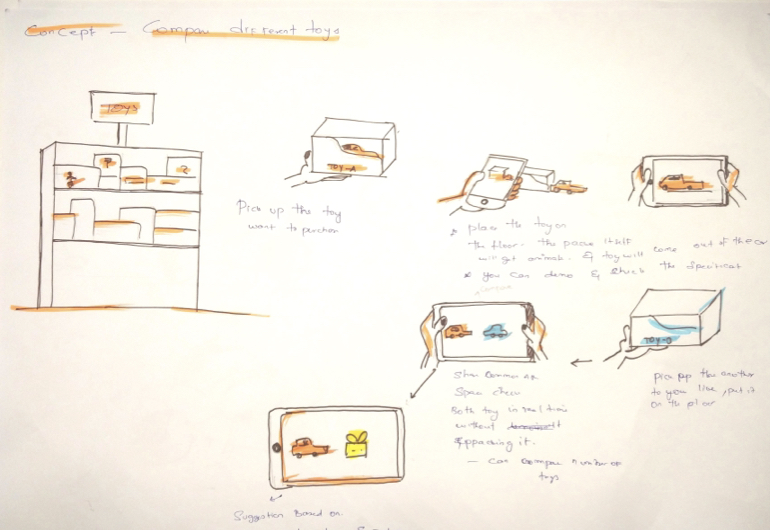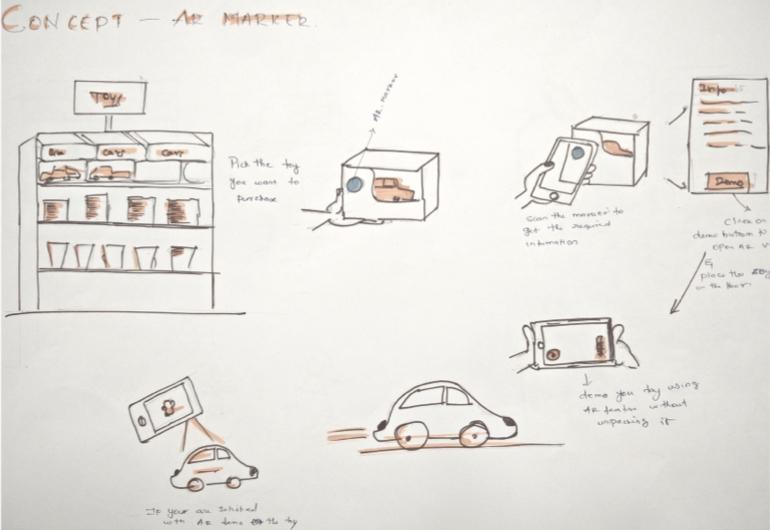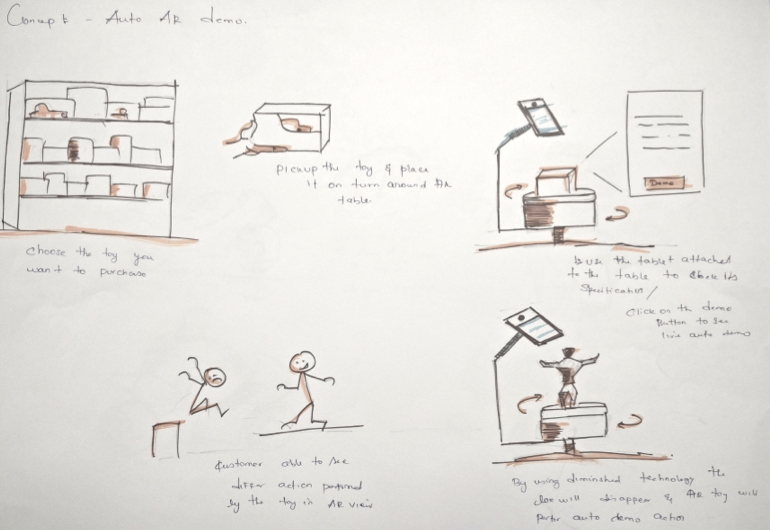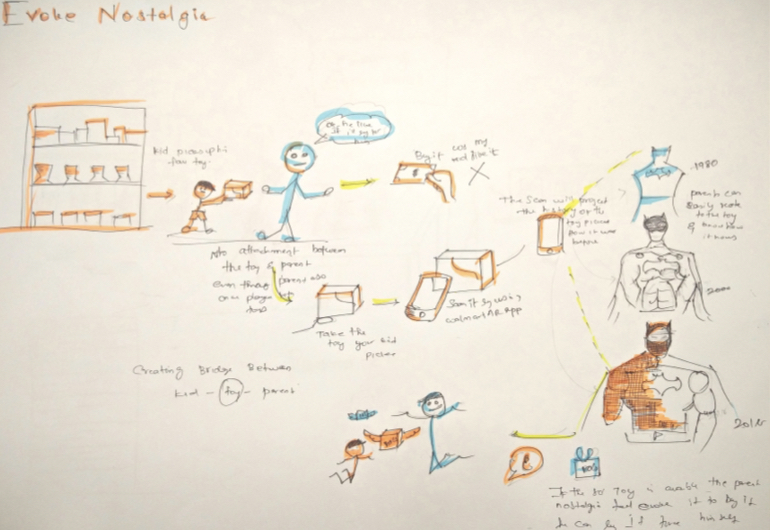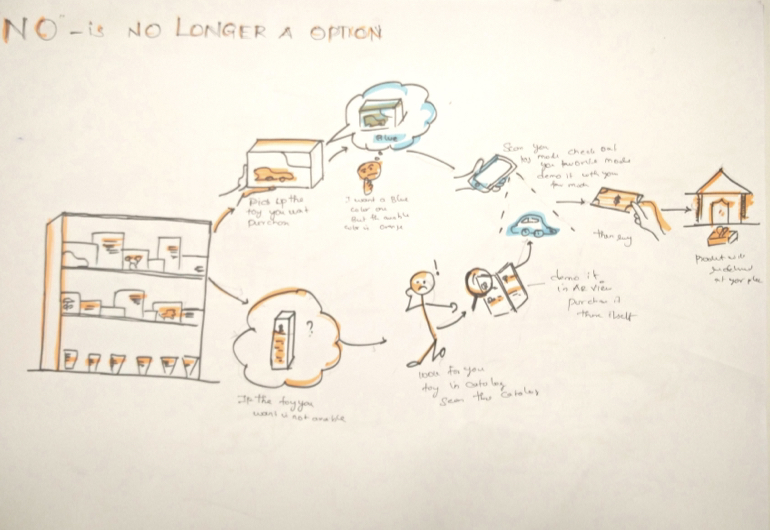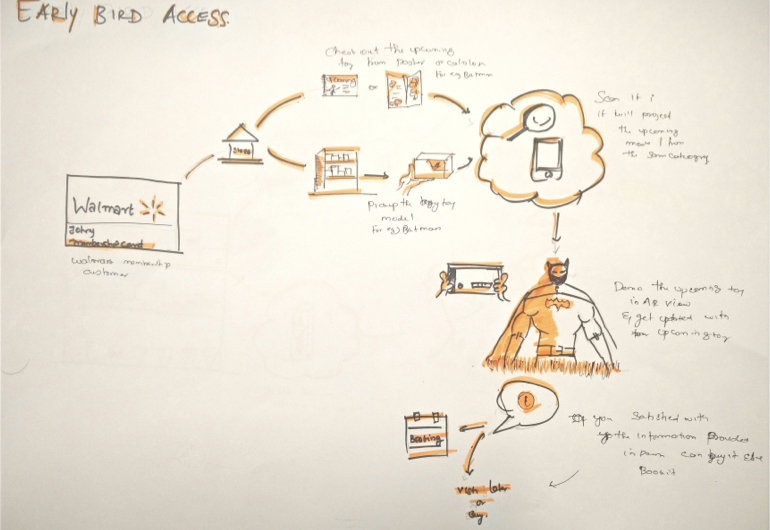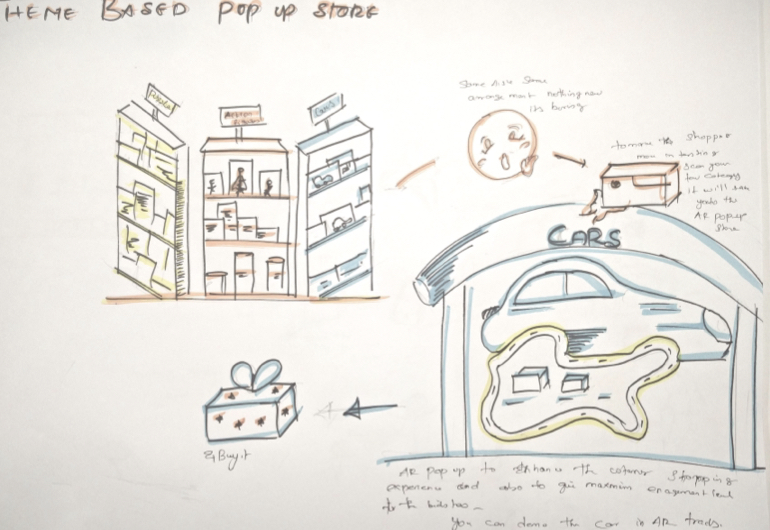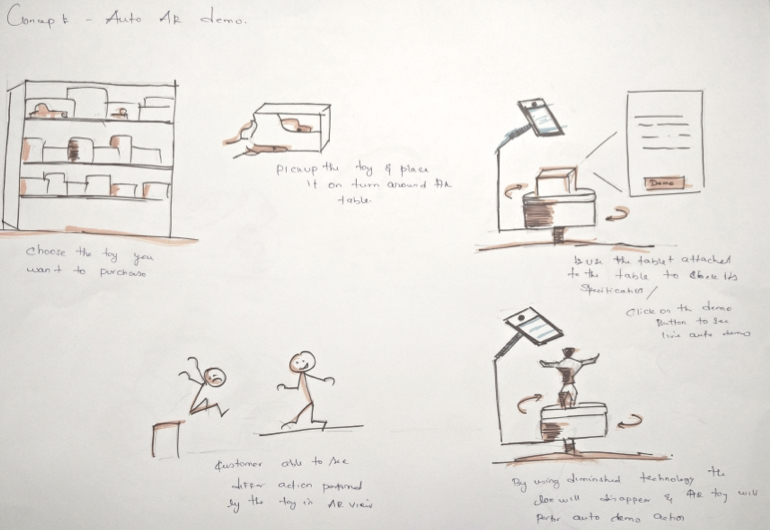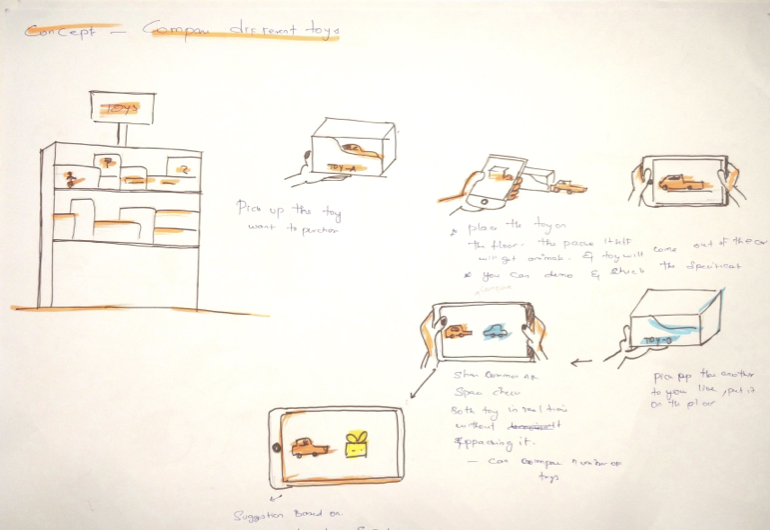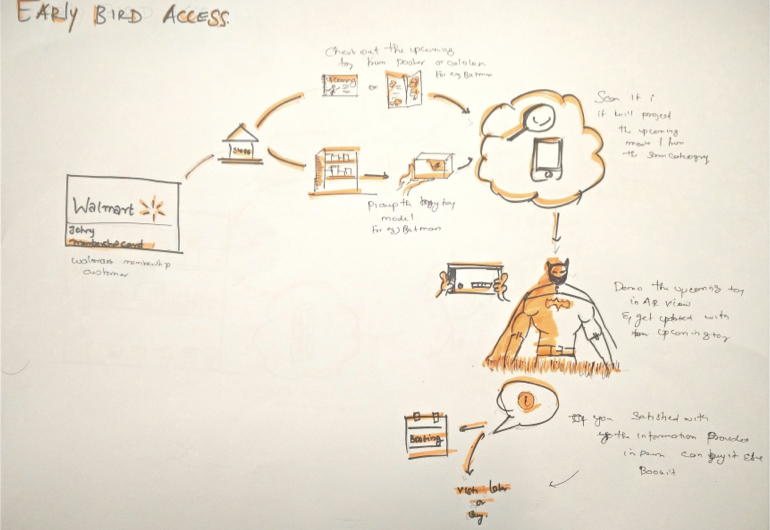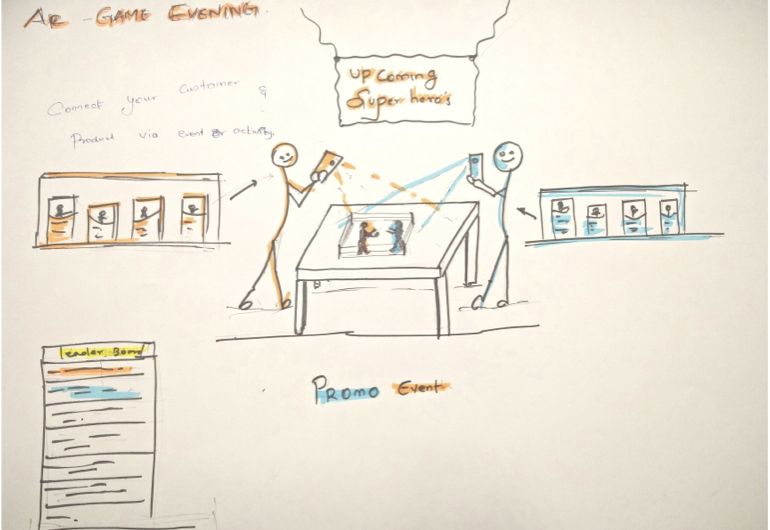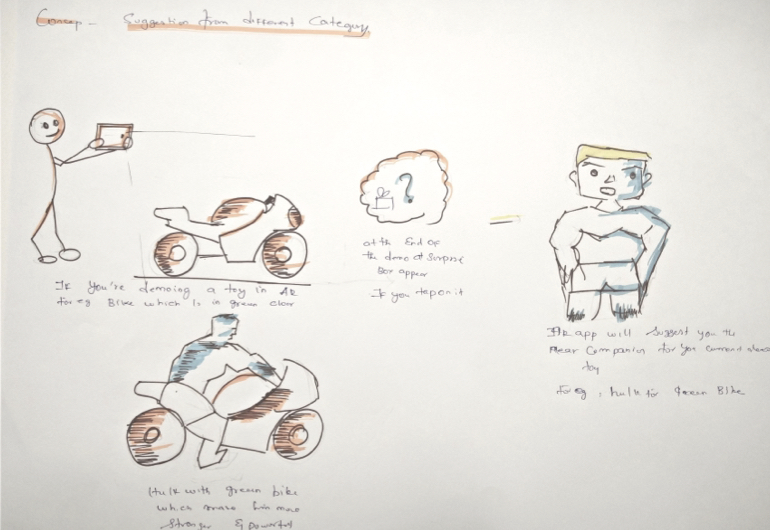Walmart

Transforming Toy Shopping with Augmented Reality
Tasked with designing the future of in-store experiences for the next generation, I created an AR-driven solution to transform how customers explore and interact with toys.
Impact
Increased user satisfaction by 79% during testing and enhanced purchase confidence for parents.
Team
Aravindh – Myself
Dinoop- Mentor
Ramesh – Global Design Manger
What I Did
UX/ UI Design
User research , Market
Prototyping
for
44.5M+
Global Users
Augmented Reality
Customization
Game Mode Recommendations
79%
increase in user satisfaction


Key Features
See What User Enjoyed
Actual Reality
Customers can experience products in real life from their mobile devices without unpacking them.
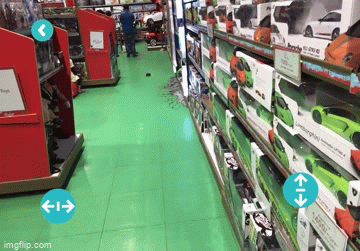
Customization
Customers can virtually explore options like colors, features, and functionality
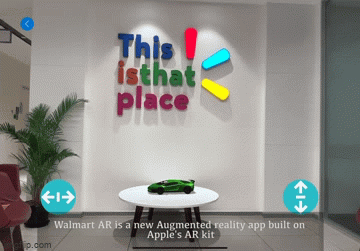
Game VS Function
ThUsers can switch between game mode and function mode to enjoy and evaluate their purchase journey
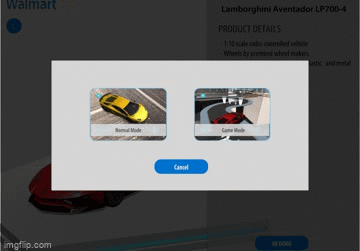
The Challenge
Redefining Toy Shopping
Enhancing in-store experiences for families with AR technology to meet evolving customer needs.
Why
Walmart needed to rethink in-store toy shopping for the future.
Fall of Toys R US
The bold move into toys is likely a result of Walmart seeing an opportunity after the bankruptcy and liquidation of Toys R Us.
Hot Wheels Sales
In 2018, Hot Wheels sales alone, 43.5 % increased compared to the previous year. Walmart’s 30% of the toys in stores will be brand new.
Black Friday Top Grosser
As a result of Black Friday, the 2018 toy department made the highest revenue among other departments.
Design Process
Switch between the tabs below to view the complete design process.
Key Research Activities
User Interviews
In-Store Observation
Market Analysis
Spoke with parents, kids, and gift buyers to identify pain points and aspirations.
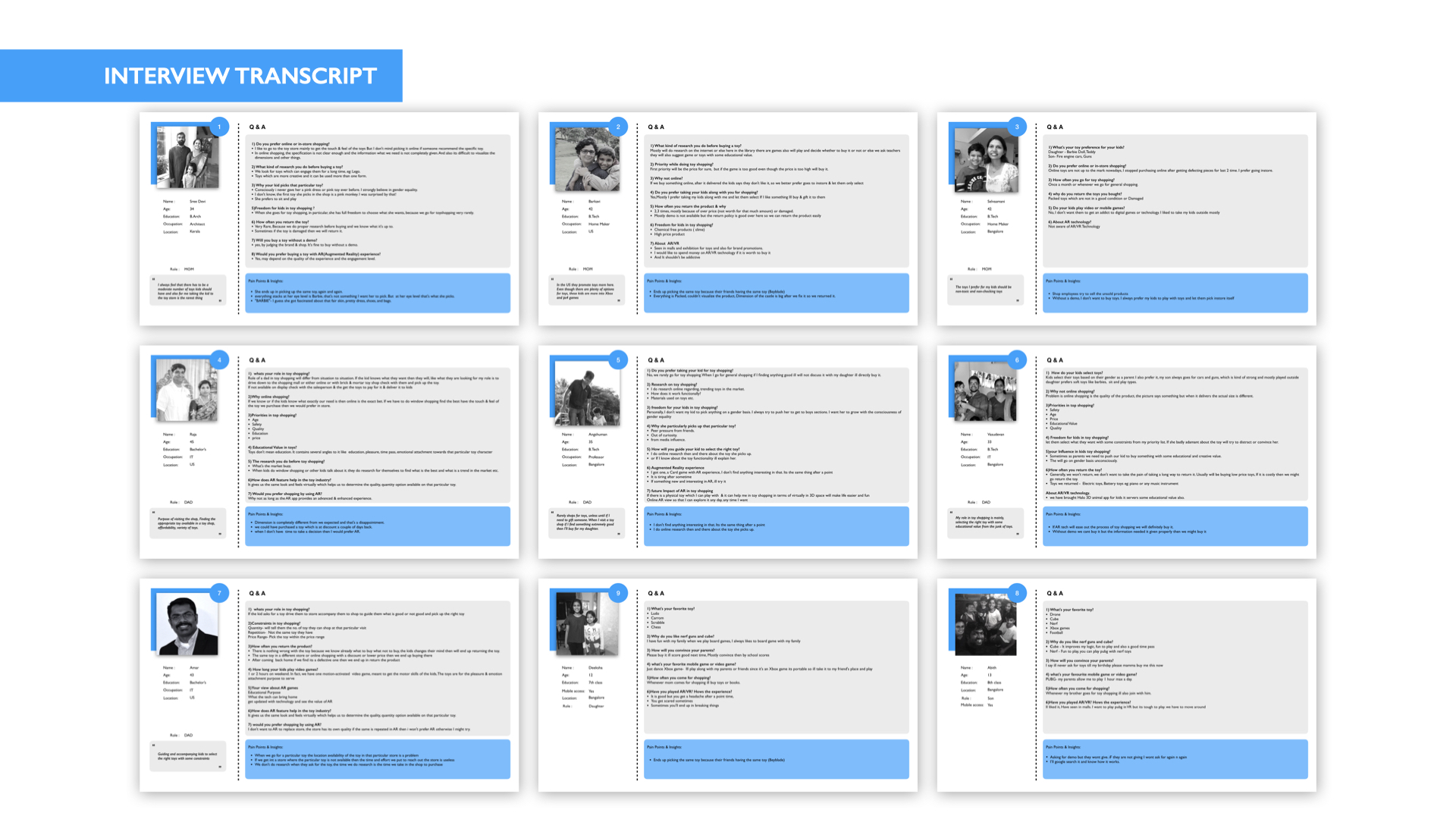
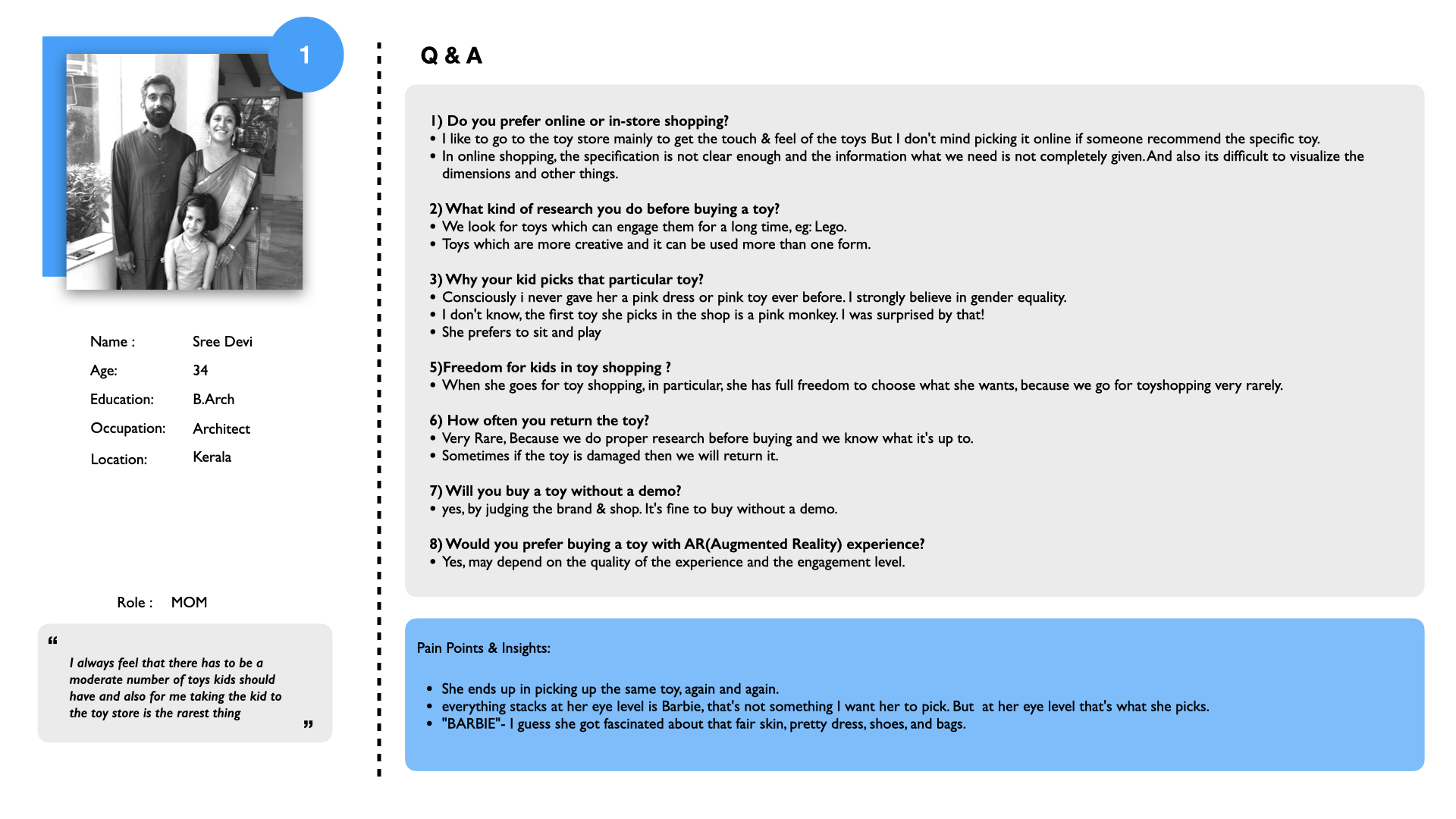
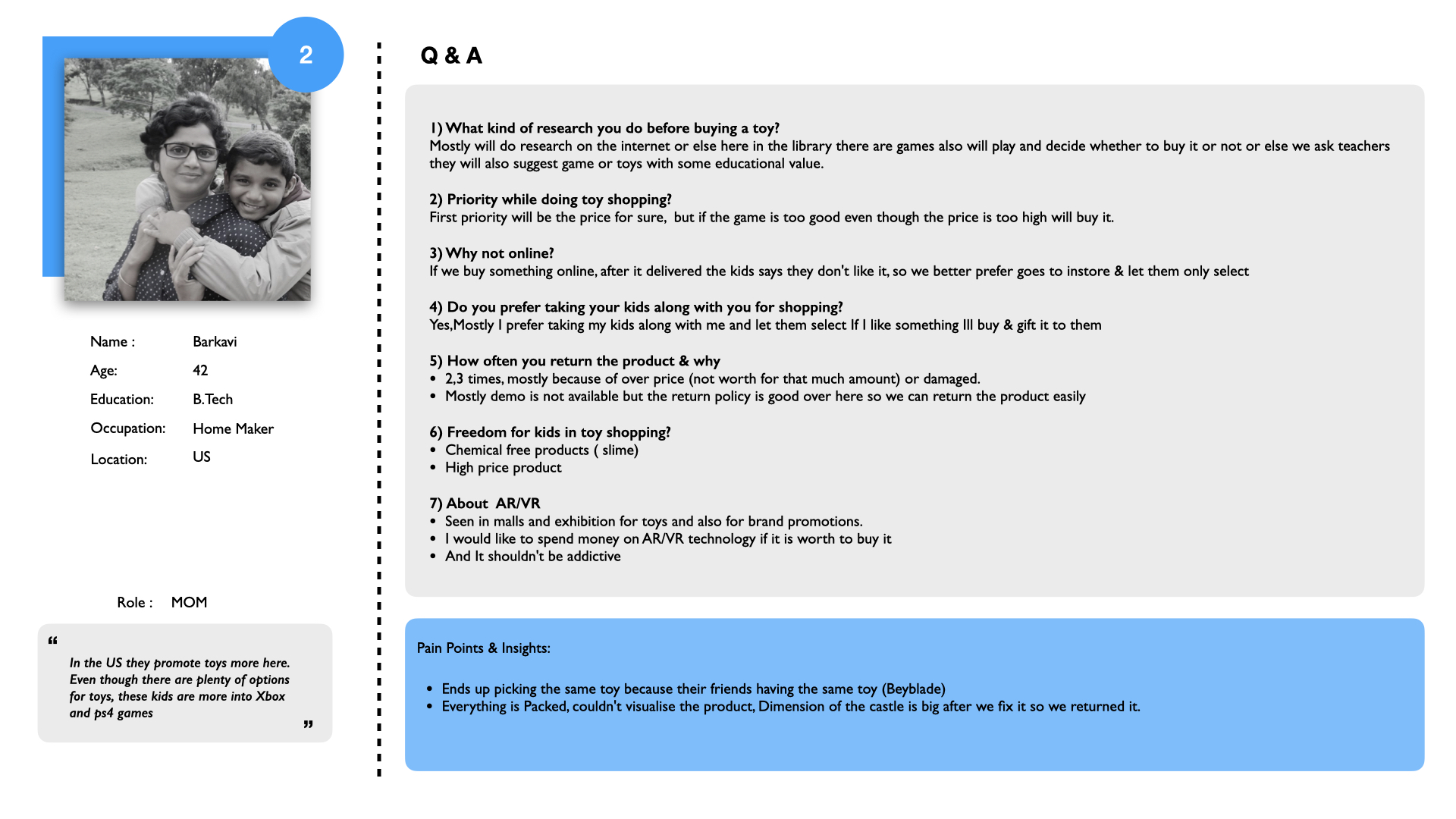
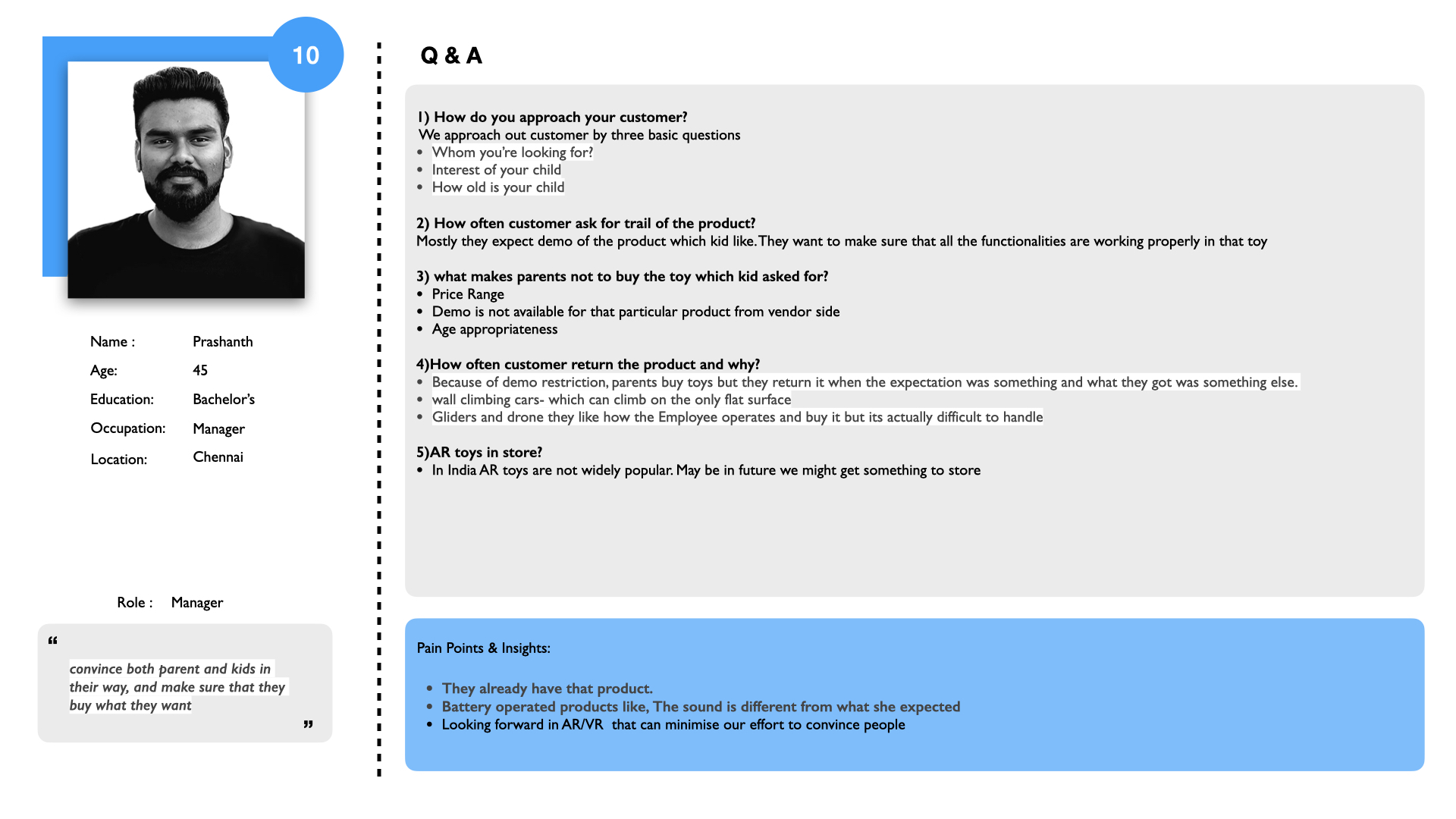
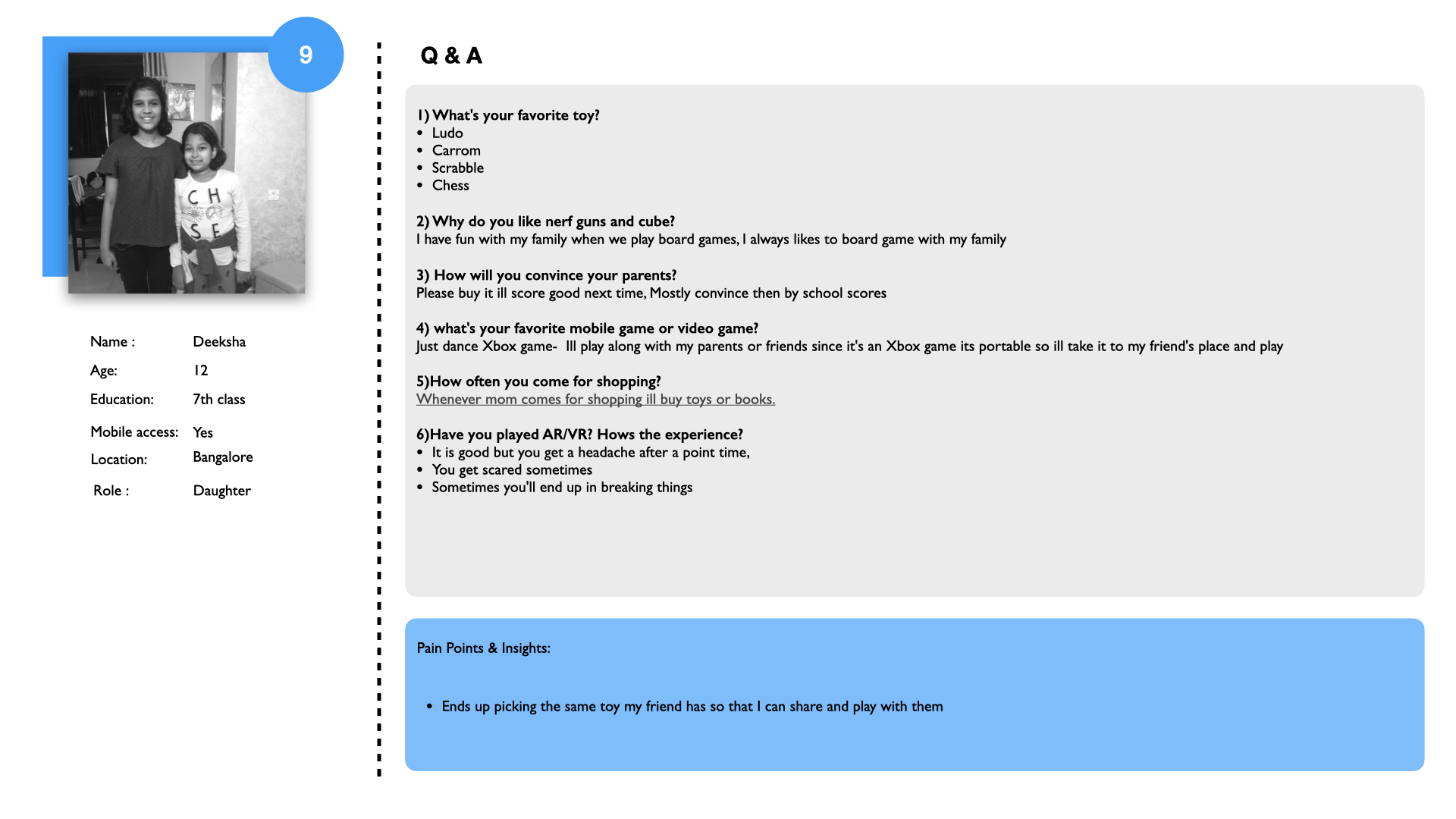
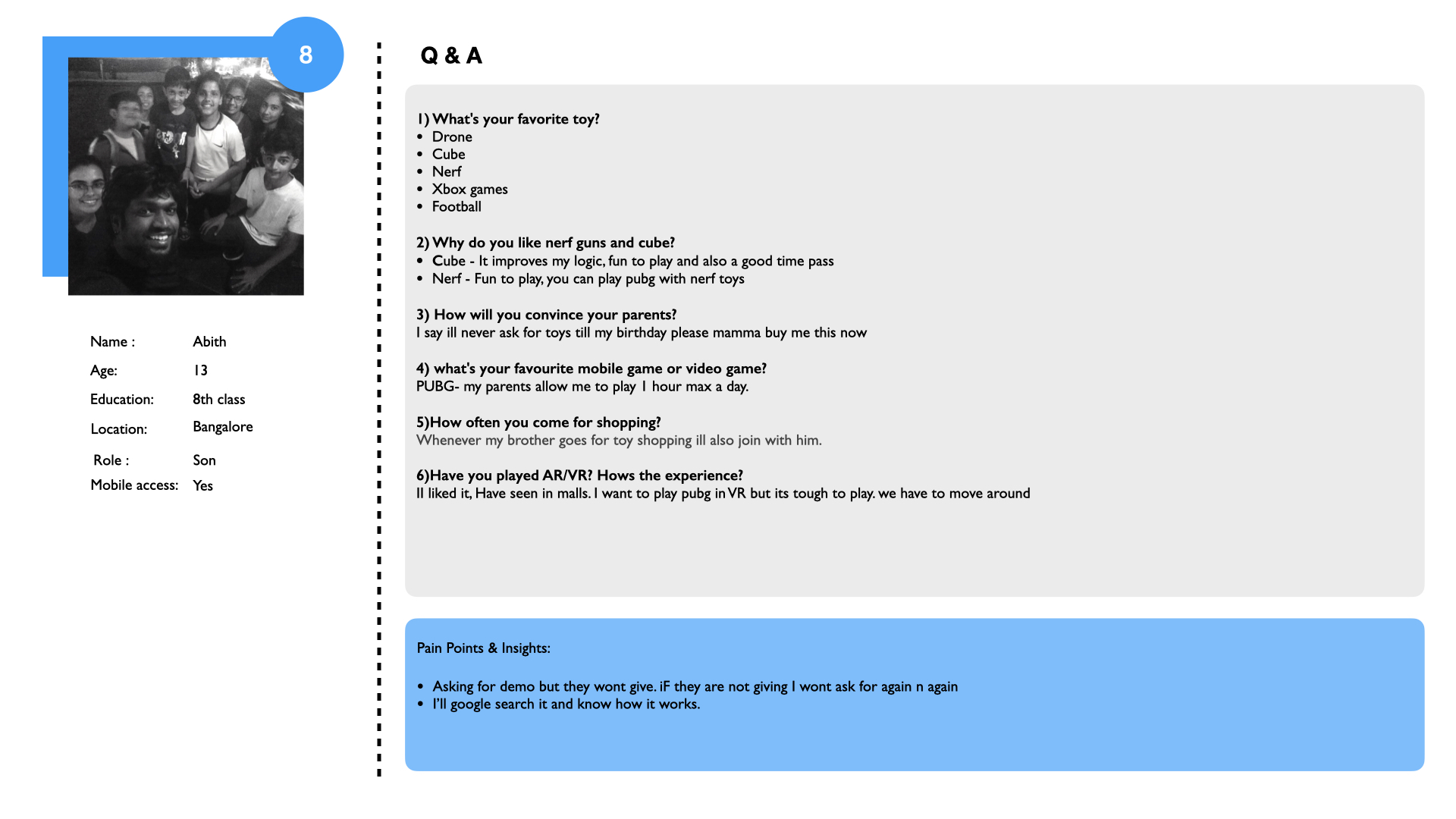
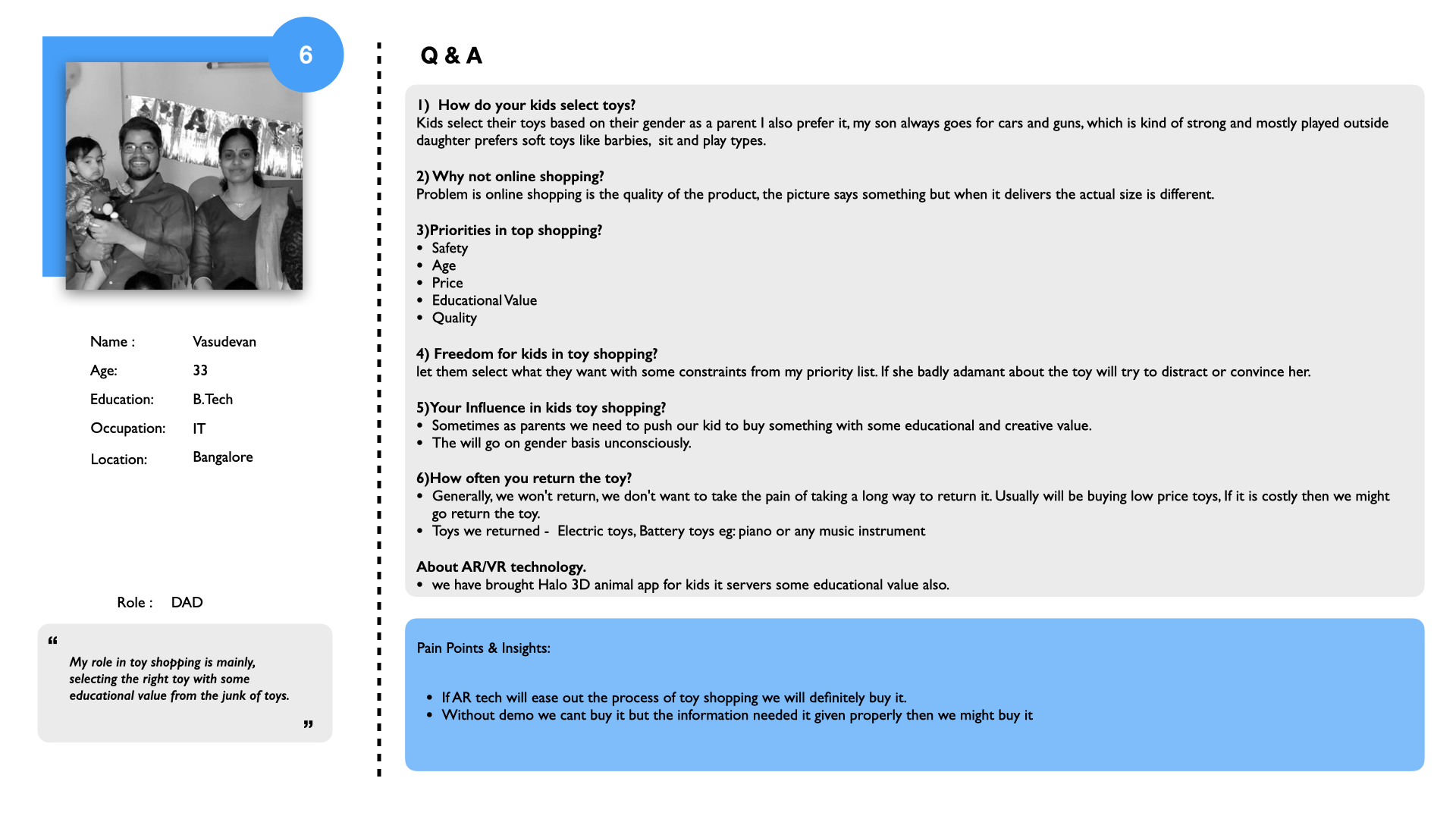
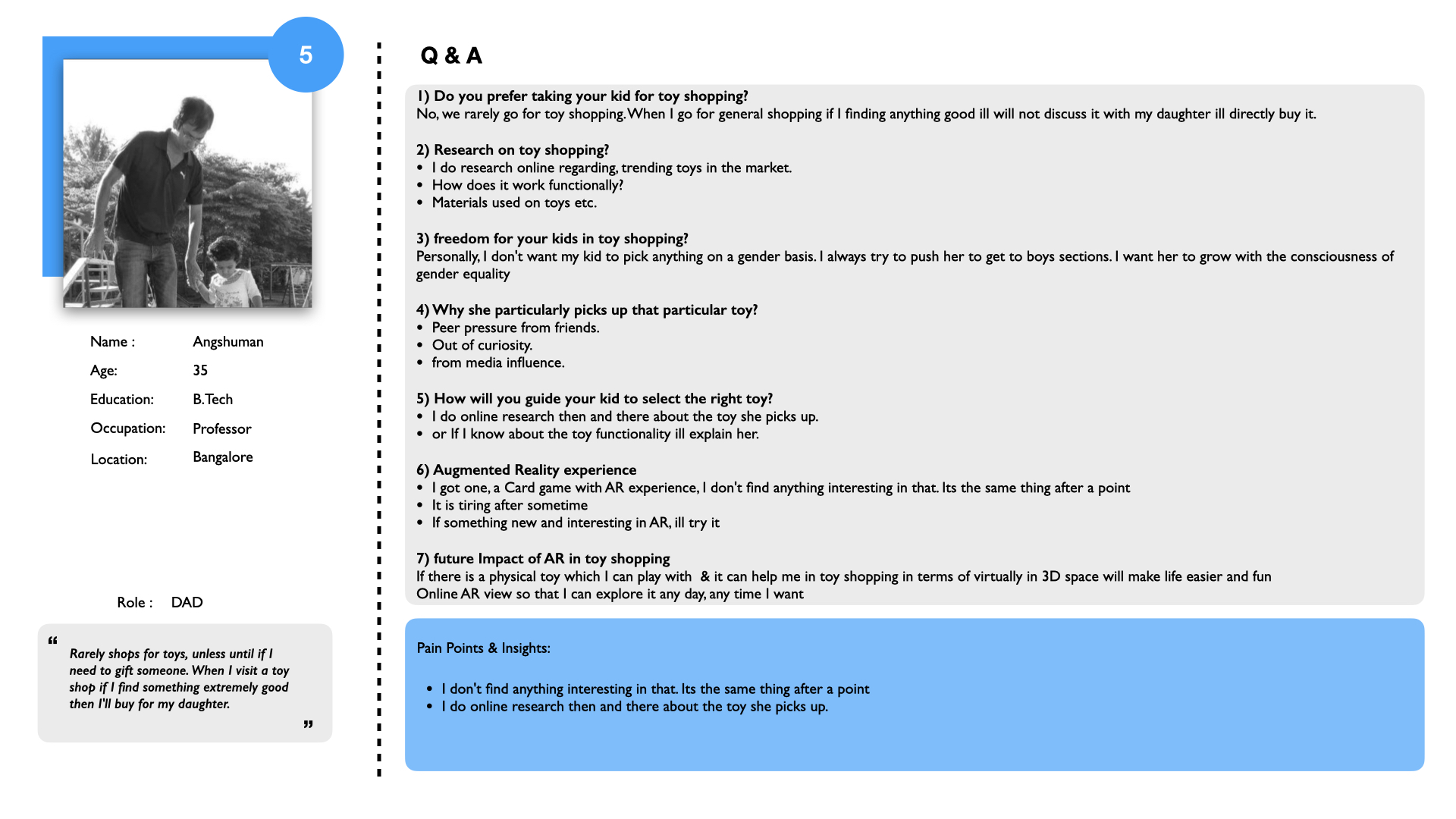
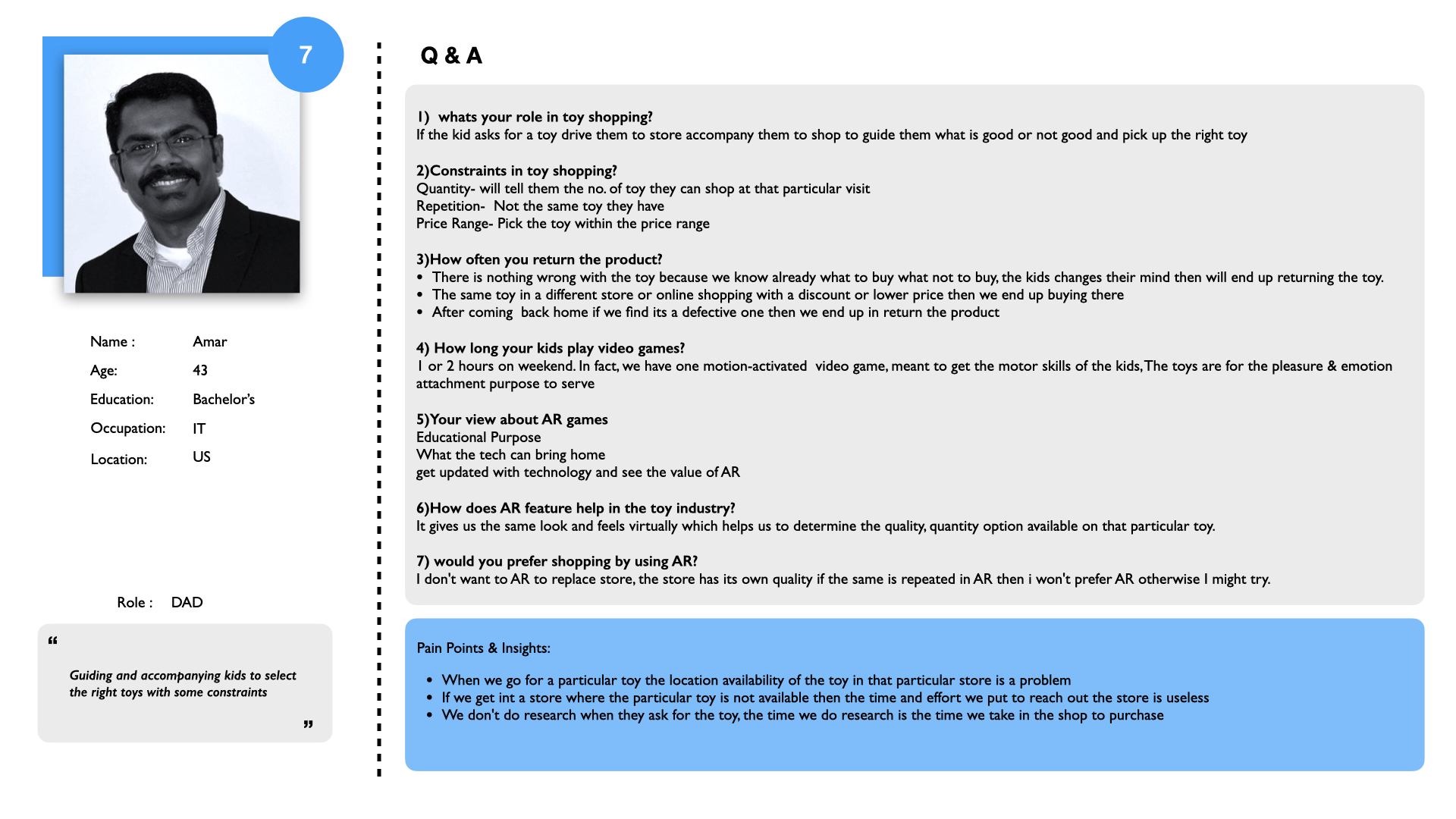
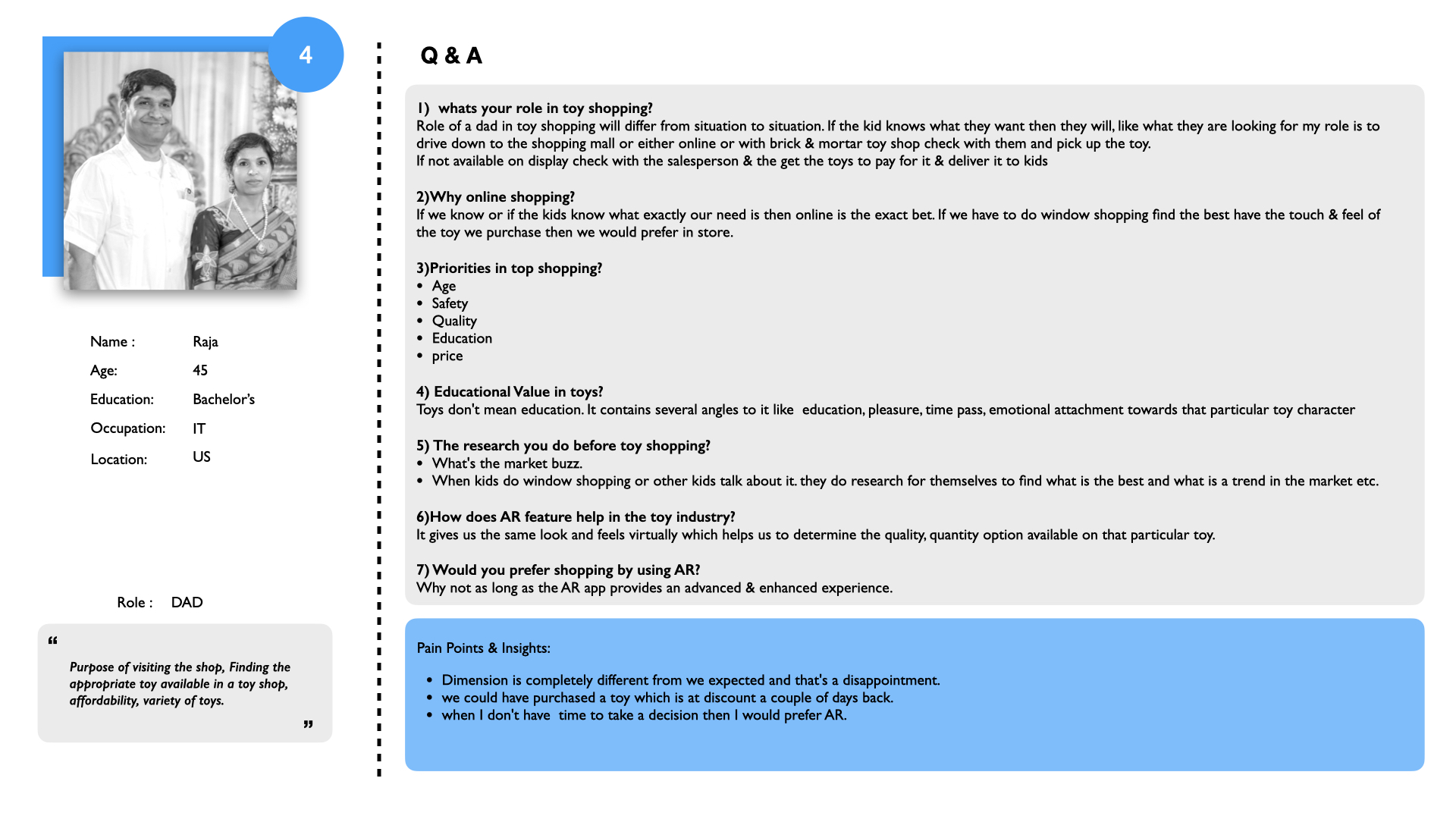
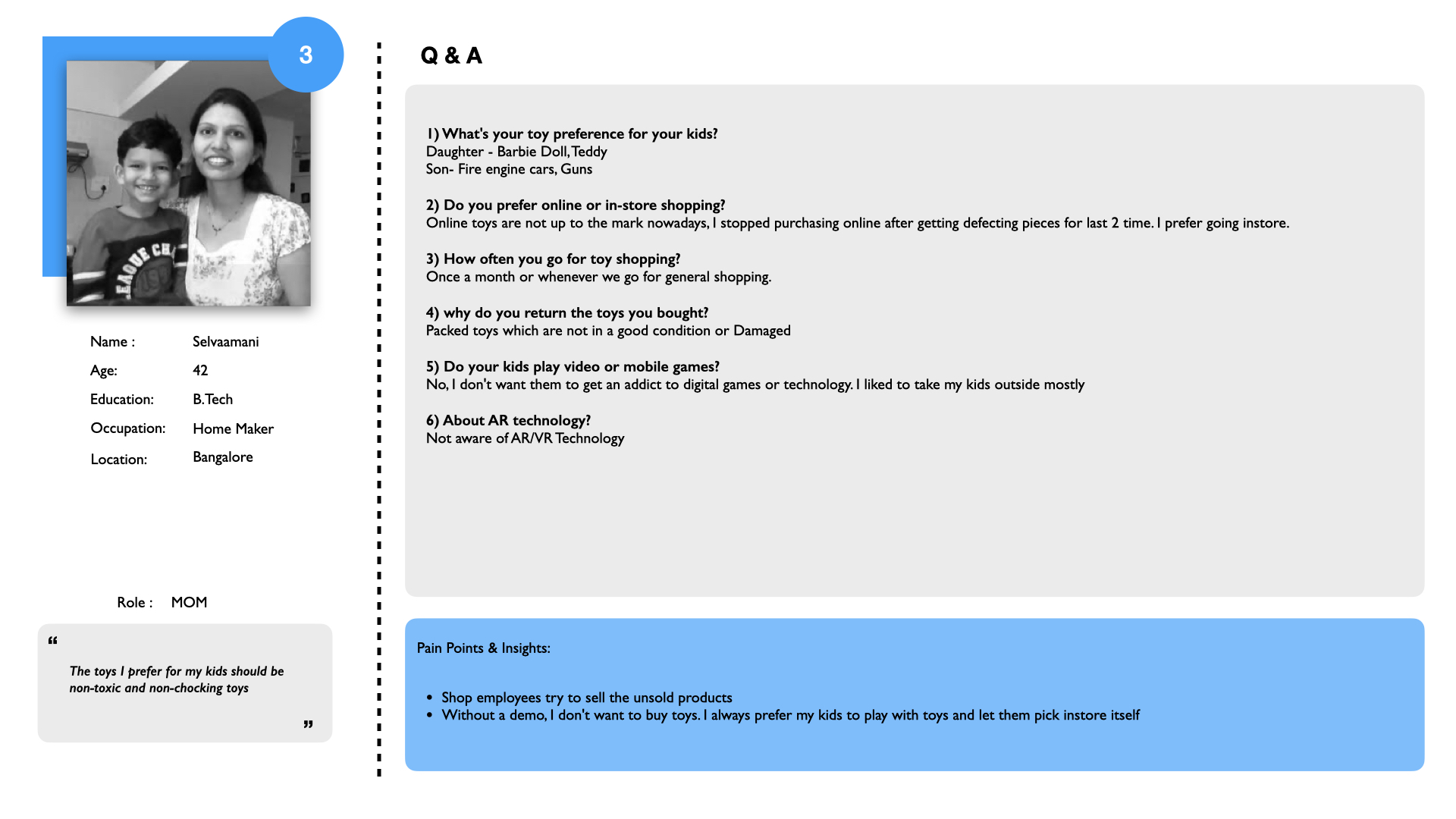
Why
Two diff. Persona
Two key personas emerged from our research to represent Walmart’s toy shopping audience: parents, who drive purchasing decisions, and kids, who influence the shopping experience.”


deriving high-level insights
Affinity Mapping
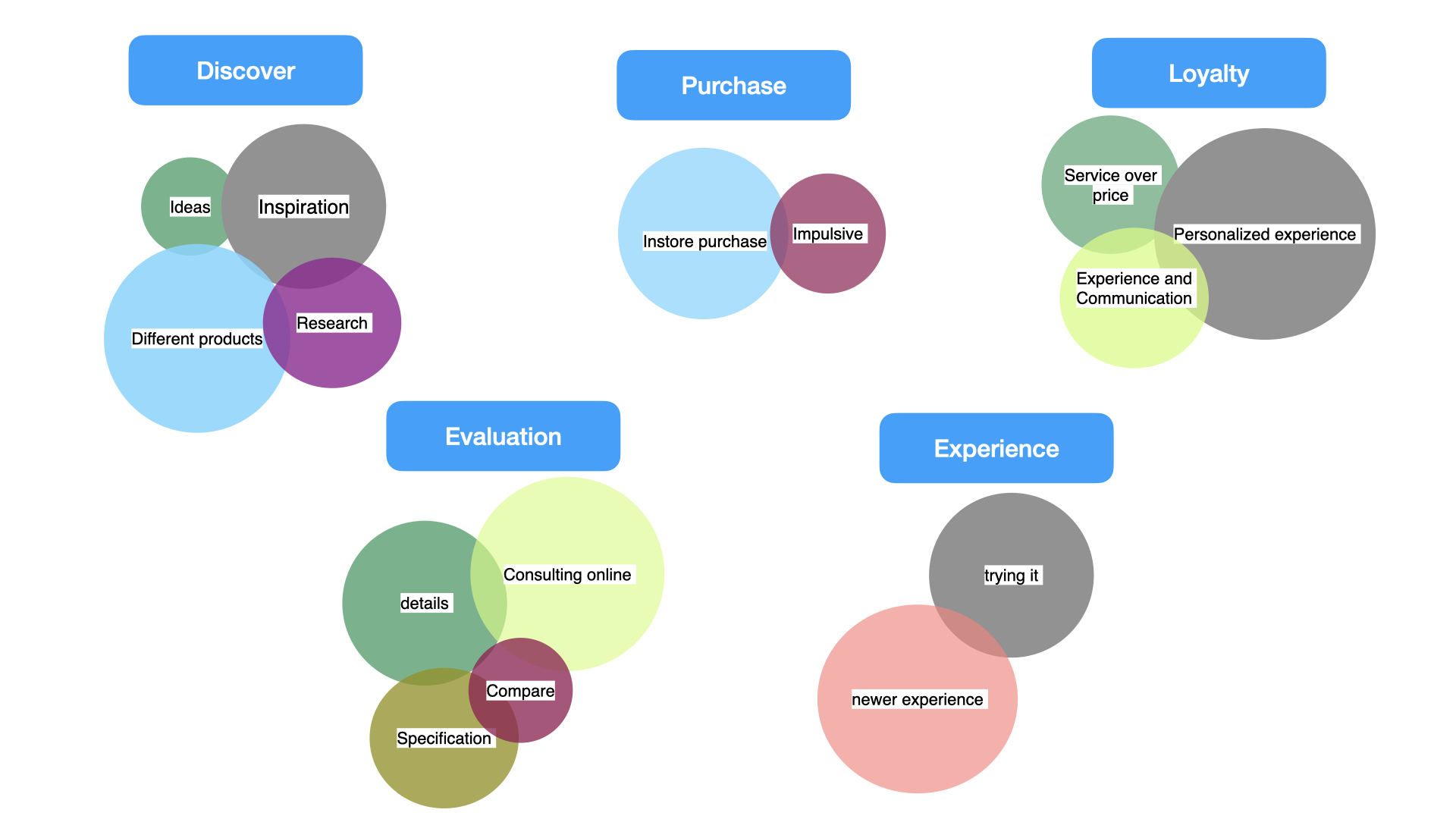
Turning Insights into Ideas
Developed innovative solutions to address user pain points and create an engaging shopping experience.
Generated 45+ ideas
Grouped Idea into Three theme
Informative
Clear product details and demos.
Interactive
Virtual toy engagement using AR
Engaging
Gamified elements for kids
Idea Validation & Story Board
- Collaborated with mentors and stakeholders to prioritize ideas.
- Focused on feasibility, user impact, and alignment with Walmart’s goals.
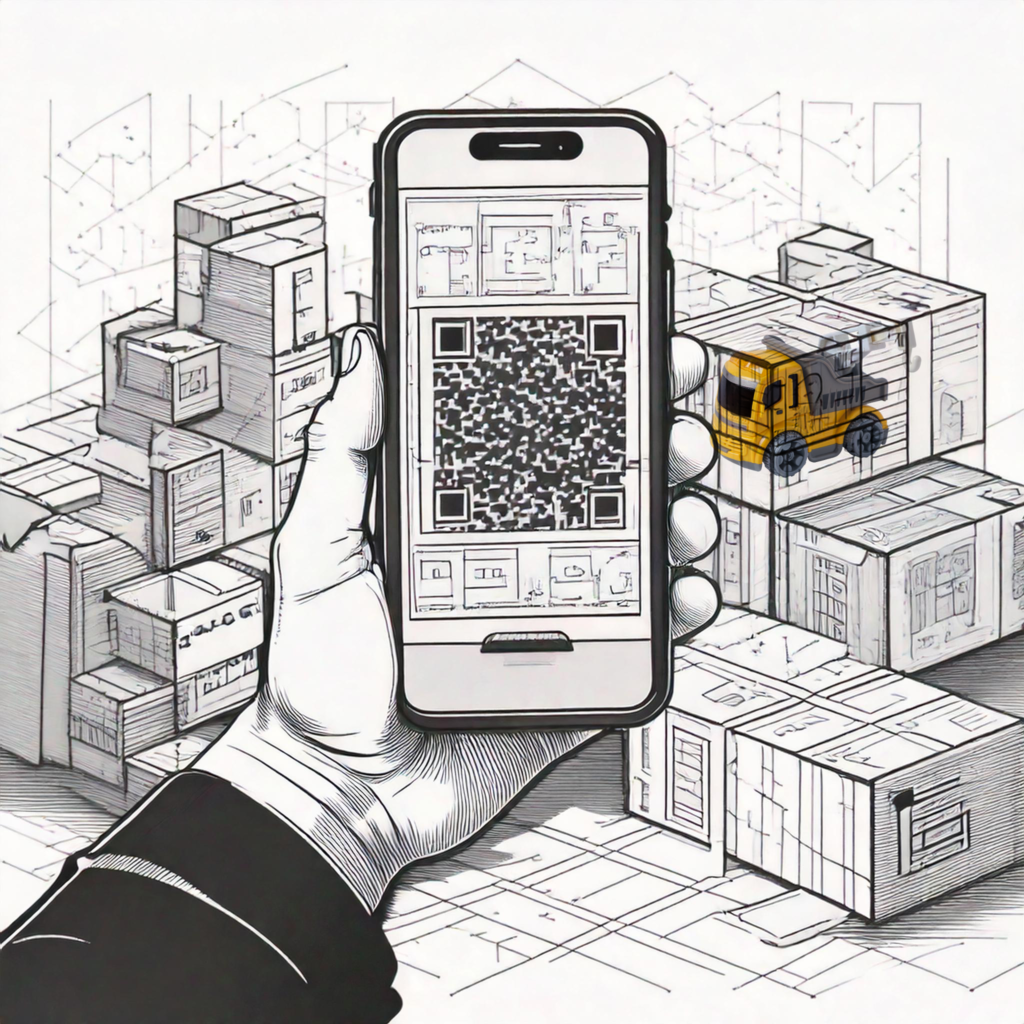
The parent or child scans the QR code on a toy using a mobile device or in-store tablet. showing a 3D model of the toy.
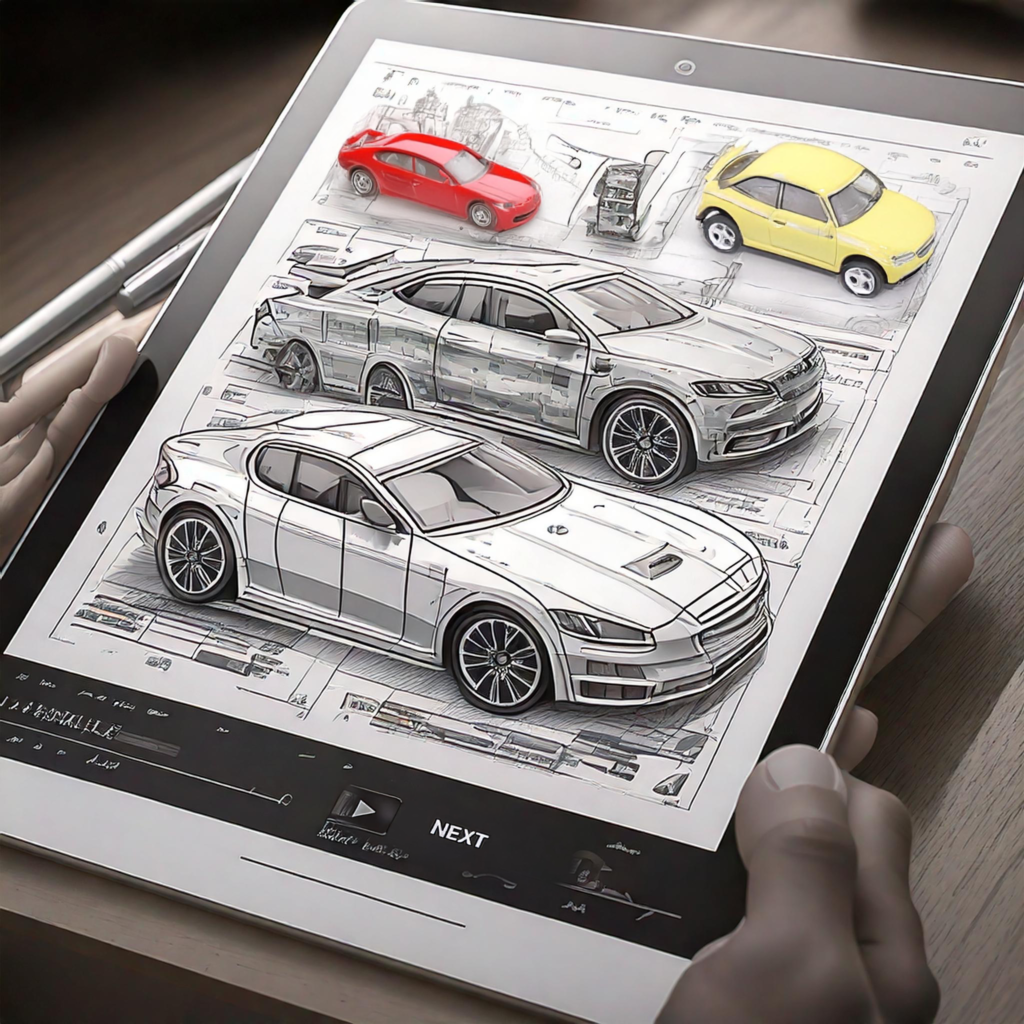
The AR screen displays key details like toy specifications, features, dimensions, and price.
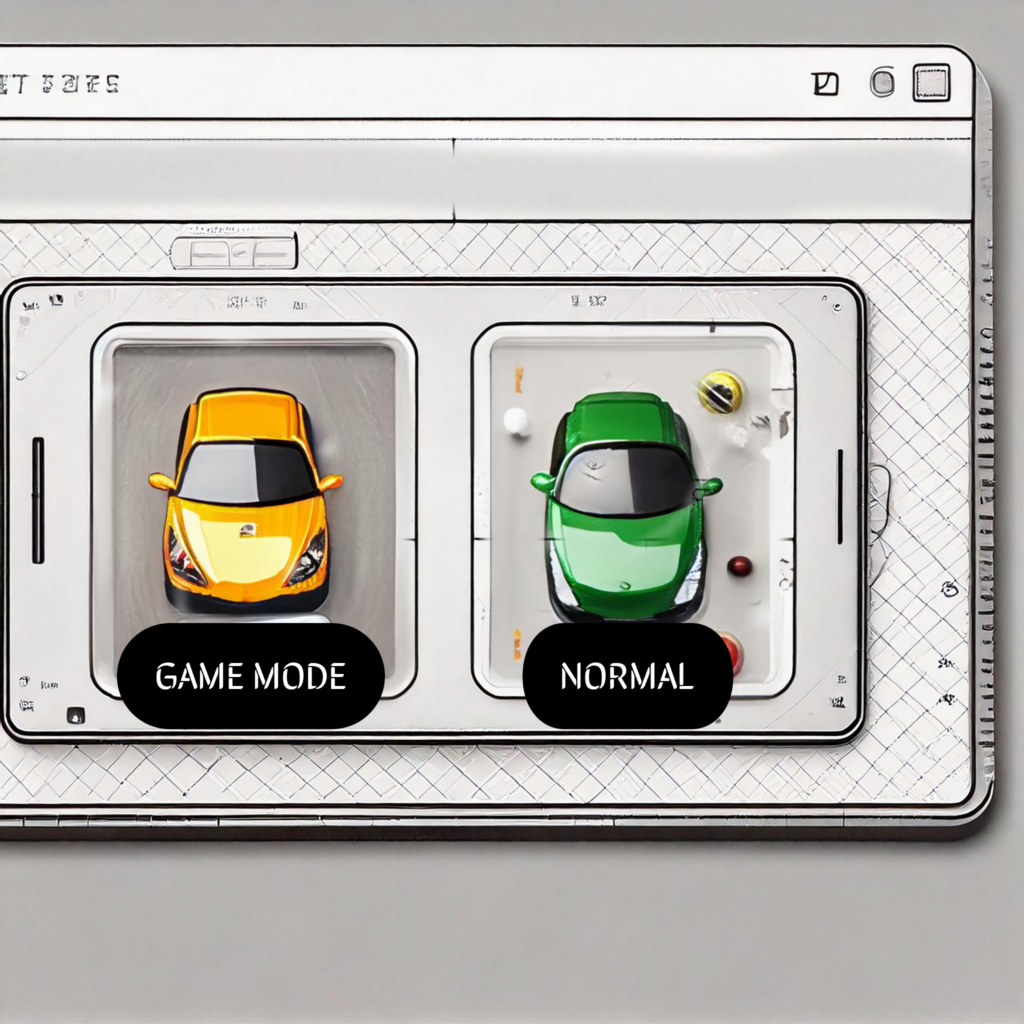
Tailor the experience to the user’s preference: functional for parents, fun for kids. Game mode VS Normal
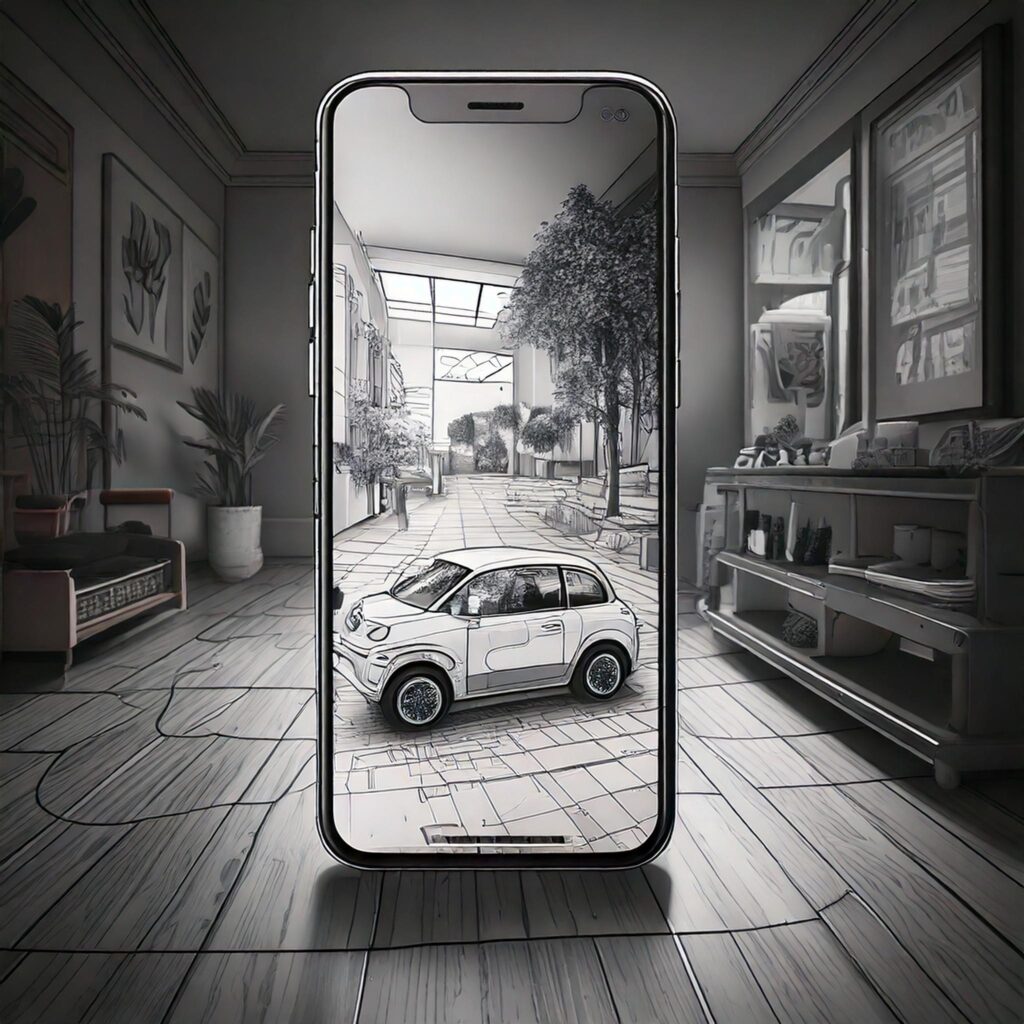
Normal Mode: Parents view detailed specs, visuals, and information about the toy. Parents to make informed decisions.
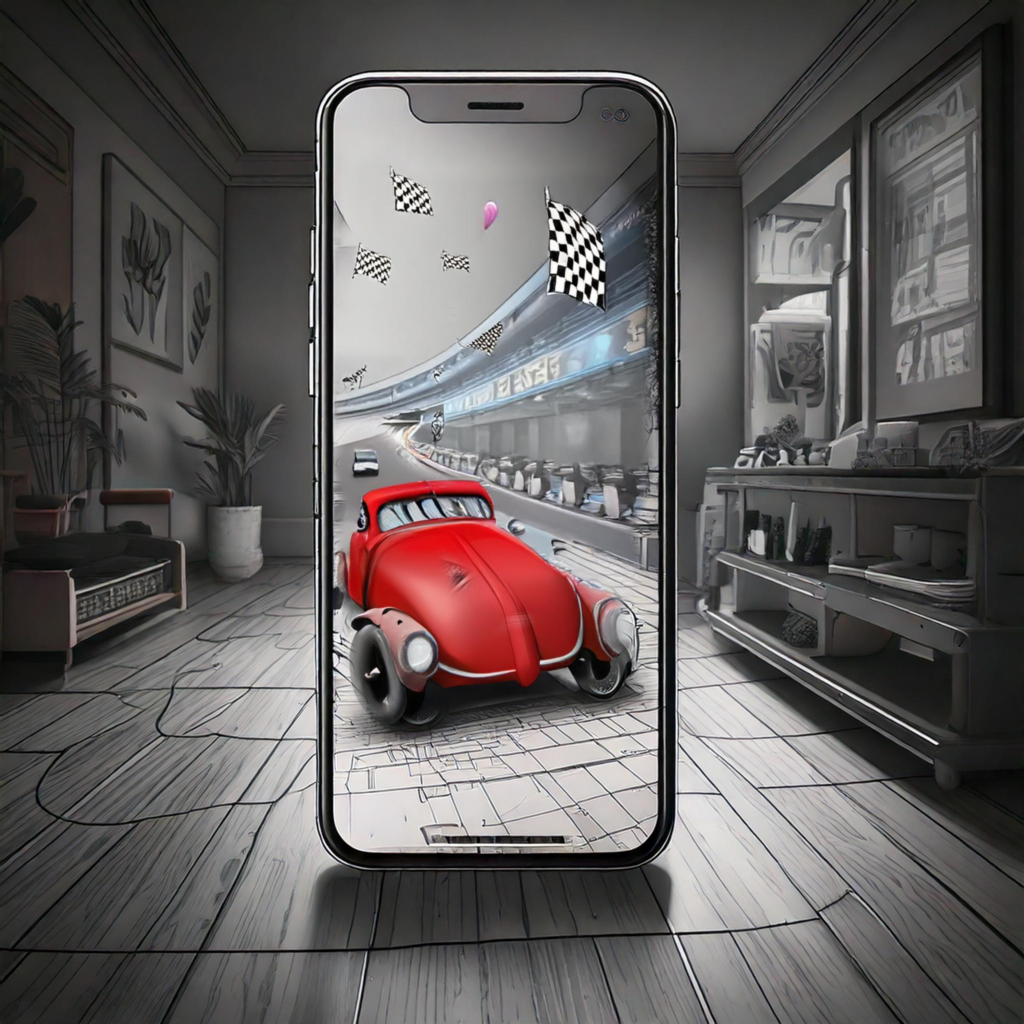
Game Mode: Kids interact with the toy through a gamified AR experience (e.g., controlling a virtual race car or building blocks).

Parent and child, satisfied with their experience, head to the checkout counter to purchase the toy. End the journey with joy
Designing The Experience
User Flows
Mapped out seamless, user-centered designs that address the needs of parents and kids while delivering a delightful AR shopping experience.

Scan QR Code: Users scan a toy’s QR code to access its AR experience.
Select Mode: Choose between Normal Mode for parents or Game Mode for kids.
Parents explore toy specs in Normal Mode.
Kids engage with gamified demos in Game Mode.
Wireframes
Designed low-fidelity layouts for:
- QR code scanning and product details screens.
- Mode selection interface.
- AR interaction and rewards dashboard.
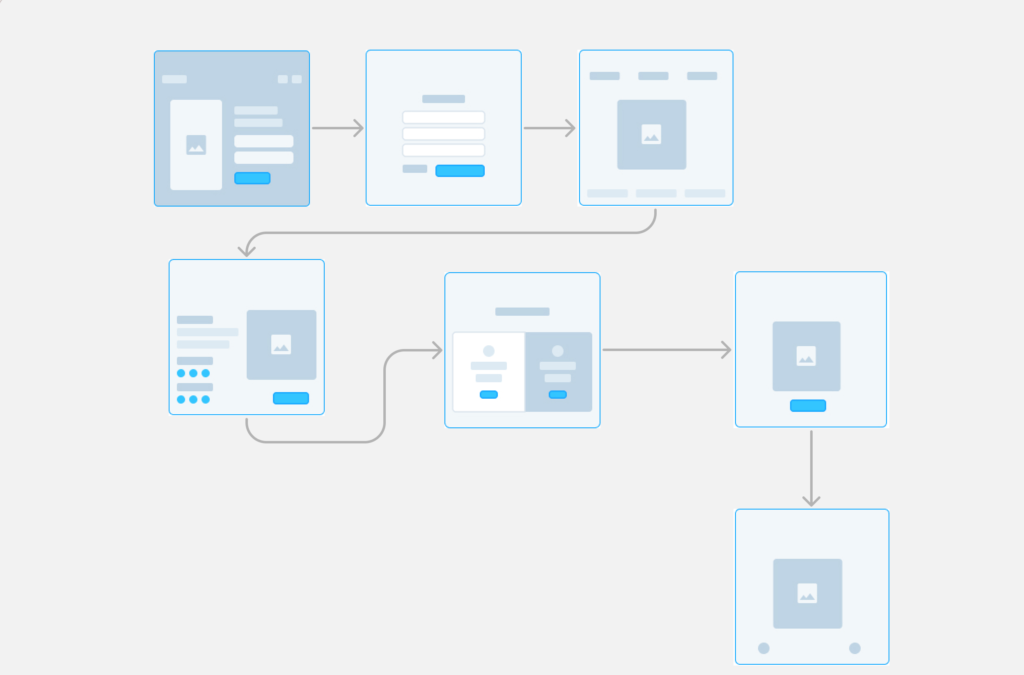
Validating The Solution
Testing with real users to ensure a seamless and engaging experience.

Testing
Key Findings
Tablet Preference:
Users preferred tablets over mobile devices for larger, more immersive screens.
Game Mode Excitement:
Kids found the gamified experience fun and engaging but needed clearer instructions.
Compatibility Issues:
Older mobile devices faced AR compatibility challenges, causing some frustration.
Iterations
Based on Feedback:
In-Store Tablets:
Introduced dedicated tablets to standardize the AR experience and resolve compatibility issues.
Game Mode Refinement:
Simplified instructions and added visual cues for easier navigation by kids.
Normal Mode Toggle:
Added a toggle to switch between Normal and Game modes effortlessly.
Key Insights
See What Our Happy Customers need
Demo Drives Confidence and Shortens Purchase Time
“I’d buy it right away if I could see how it works in real-time. It saves so much guesswork and helps me avoid buyer’s remorse.” – Parent

Alison Burgas
AR/VR Enhances Shopping Engagement and Saves Time
“If I can use AR to see the toy in my space or interact with it, it makes the decision so much easier—and more fun for my kids too!”

Maria
Parents Balance Freedom with Priorities When Buying Toys
65% of parents said they would pay more for toys that meet all their quality and functionality criteria.
Key Insights
Final Screens
Form Submission/Login Page
Streamlined login page to onboard users quickly and get them started with the AR shopping experience.

Home Screen
Centralized hub offering options to scan a toy or explore a curated list of available products.

Scan the Toy
AR-enabled surface scanning to accurately place and visualize the toy in any environment.

Product Information Page
Comprehensive product details with customization options, helping parents make informed decisions.

Surface Scanning for Placement
AR-enabled surface scanning to accurately place and visualize the toy in any environment.

Mode Selection Page
Dual-mode selection for parents and kids—Normal for detailed specs or Game Mode for an immersive, playful experience.

Augmented Reality Interaction
Engage with the toy in AR instantly, exploring its features and gameplay without unboxing

Reflection and retrospect
“During the project, my game design background initially created ambiguity in the UX process. By embracing iteration and working closely with mentors, I refined my approach to create a solution that was both user-centered and aligned with business goals.”
This project reinforced that, as a designer, gut feelings are not enough. Validating every decision with research and insights not only strengthens your story but gains the trust of stakeholders and users alike.
